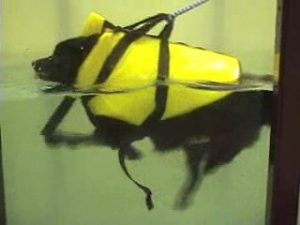
Animal rehabilitation is the application of the principles of human physical therapy to companion animals. Rehabilitation is beneficial for chronic or acute orthopedic and soft tissue injuries, recovery after surgery, treatment of wounds, senior patients with declining mobility, and to improve mobility and strength after chronic medical issues. Rehabilitation for companion animals is considered a medical treatment and can legally be prescribed by a certified Doctor of Veterinary Medicine (DVM) or a Certified Physical Therapist (PT) in the state of Colorado. PT’s can’t prescribe medications so a DVM must manage any prescribed medications. Once a treatment plan is written, treatments may be administered by Certified Rehabilitation Assistant, (CRA), or trained staff members. Prior to beginning rehabilitation any underlying medical issues should be identified and treated. If medical issues such as infection, hypothyroidism, Cushing’s disease, etc., are not properly diagnosed and treated, rehabilitation will have limited benefit. Proper nutrition, pain control, and localization of all orthopedic and soft tissue issues, are also essential components in successful rehabilitation.
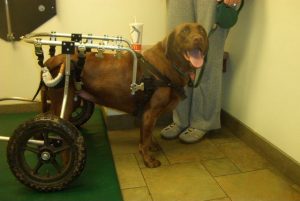
Initial steps in a rehabilitation plan include discussing diet, adding proper nutritional supplements and controlling pain and inflammation. Long or short- term pain control may be needed depending on the pets age and the medical conditions being treated. Steroids or NSAIDS, such as Meloxicam, Rimadyl, Deramaxx, and other pain medications including Tramadol and Gabapentin may be part of the treatment plan. For patients unable to take traditional medications, alternatives to NSAIDS such as Microlactin or herbal options may be recommended.

Rehabilitation treatments may include cold or heat applications to decrease edema or increase circulation into tissues, stretches or massage to break down adhesions or scar tissue and improve range of motion (ROM). Specific therapeutic exercises may be prescribed to strengthen targeted muscles. Treatments requiring medical equipment are often part of the therapy. Modalities may include e-stim or TENS, therapeutic (cold) laser or other low-level light therapies, electromagnetic therapies, therapeutic ultrasound, land or underwater treadmill, or swim therapy. The various modalities listed can improve oxygenation and blood flow into tissue, decrease swelling or edema, decrease pain, breakdown scar tissue, help build muscle and provide Adenosine Triphosphate (ATP – a molecule which provides energy to all cells) for rapid cell repair and faster healing. There is significant research to support quicker recovery as well as more complete return to function when Rehabilitation is part of a medical treatment plan.
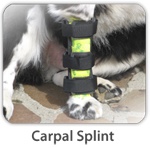
Adjunctive therapies and treatments such as Spinal Manipulation (Animal chiropractic), and Acupuncture can be very beneficial in conjunction with Rehabilitation. With more severe orthopedic or soft tissue injuries treatments such as platelet rich plasma PRP, or stem cell injections may be recommended along with Rehabilitation. In cases where surgery is not an option, or with amputation, orthotics or braces may also be part of the treatment plan.
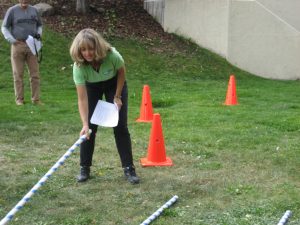
Athletes and working dogs, including dogs who participate in agility, fly ball, tracking, cart pull, competitive frisbee, competitive dance, search and rescue, hunting, and police and military dogs are more likely to engage in activities where injuries may occur. Early intervention is important to keep these athletes active and participating in their sport or performing their job. Subluxation’s of the spine or other joints are not uncommon due to repetitive impact injuries, slips or falls during training and competition. Early and aggressive intervention including adjustments, laser, massage, and therapeutic exercises, can mean the difference between a short time off for recovery, vs. a chronic, or potentially career ending problem. Routine adjustments are a good idea for athletes and working dogs because it is a great way to identify orthopedic or soft tissue injuries, which may otherwise go unnoticed.
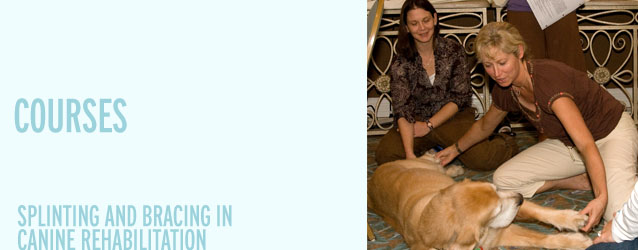
Dr. Adams has been providing Rehabilitation for her patients for over 22 years, and an integrative medical approach for more then 34 years. To schedule an appointment in Lakewood, please click here.
